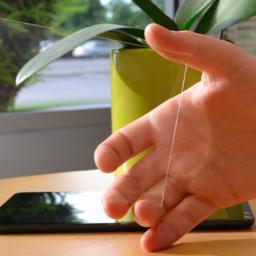Transparent solar cells that could power skyscrapers
 Research has boosted solar panel efficiency over time. But some scientists argue that to truly take advantage of the sun's power, we also need to expand the amount of real estate that can be outfitted with solar, by making cells that are nearly or entirely see-through, i-e transparent cells.
Research has boosted solar panel efficiency over time. But some scientists argue that to truly take advantage of the sun's power, we also need to expand the amount of real estate that can be outfitted with solar, by making cells that are nearly or entirely see-through, i-e transparent cells.A Silicon Valley start-up named "Ubiquitous Energy" has succeeded in creating such transparent solar cells. ClearView is a transparent solar cell that can coat any surface, including displays and windows, to harvest ambient light and generate electricity. Ubiquitous Energy has redesigned the solar cell to selectively transmit light visible to the human eye while absorbing only the ultraviolet and infrared light and converting it into electricity.
Read more from...
That doesn't seem to mesh with their goal of completely eliminating the need for batteries in small consumer gadgets and even smart phones, as LED lighting doesn't emit ultraviolet or infrared, and there isn't always a window nearby. Still a potentially revolutionary technology in other applications, but unfortunately it's in the very, very early stages of development.
http://www.digitaltrends.com/cool-tech/ubiquitous-energy-transparent-solar-power-timeline/
Besides, whatever may be theoretically best, the economics show sprawl, even with commuting, is still massively more affordable than high-demand city living. People will continue to want to live without neighbors above and below them, and will want decent-sized yards that they don't have to share. Cutting-out the energy wasted by daily commuting is a net-positive result, regardless.The fact that Yahoo discontinued telecommuting, is not evidence that telecommuting doesn't work... Your link turns up opinion pieces on both sides, some saying it was a good idea, others saying it was a mistake, and most saying the number of companies who allow telecommuting keeps increasing. For Yahoo, I think it was just a tool to cut employees without as much downside as firings or layoffs.